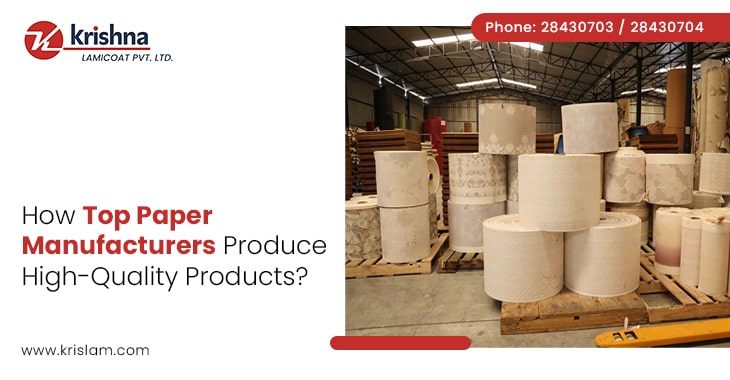
Paper is an essential component of our everyday lives. Paper is everywhere, from the books we read to the packages we receive in the mail. But have you ever stopped to think about how paper is made? Creating high-quality paper involves several steps, and Top Paper Manufacturers have perfected this process over time to produce the best products possible. Every business needing paper should rely on any of the Top Paper Manufacturers for their products.
Krishna Lamicoat is the Top Packaging Company that supplies the Best Pattern Paper to several businesses of different industries. We meet the needs of all our clients with quality assurance and great service. Satisfaction of customers is one of our primary motos. As the Top Packaging Company, we follow certain steps to ensure the production of one of the Best Pattern Paper in the nation.
The following steps are followed by every reputed and reliable paper manufacturer:-
- Raw Materials
- Pulping
- Bleaching
- Refining
- Paper Making
- Coating
- Cutting and Packaging
Raw Materials:
The first step in paper production is sourcing raw materials. Most paper is made from wood pulp, which is derived from trees. Top paper manufacturers often use sustainably sourced wood from well-managed forests to ensure their products are environmentally responsible. Other raw materials used in paper products include cotton, hemp, and recycled paper.
Pulping:
Once the raw materials have been collected, they are put through pulping. This involves breaking down the fibres in the wood pulp using chemicals or mechanical means. The result is a slurry of threads that can be used to create paper. The quality of the paper produced depends mainly on the quality of the pulping process, which is why top paper manufacturers invest heavily in this production stage.
Bleaching:
After pulping, the fibres are often bleached to create a whiter, brighter paper. This is done using chemicals such as chlorine dioxide or hydrogen peroxide. However, due to environmental concerns, some paper manufacturers are moving away from chlorine-based bleaches. Instead, they are using oxygen-based bleaches or other natural alternatives.
Refining:
Once the fibres have been pulped and bleached, they are put through a refining process. This involves further breaking down the fibres to create a smoother, more even paper surface. Refining can be done mechanically or chemically, depending on the desired outcome.
Papermaking:
The refined pulp is then ready to be turned into paper. This is done using a paper machine, which involves several steps. The first step is forming the paper sheet, which is done using a wire mesh. The pulp is then pressed to remove excess water and dried using heat.
Coating:
After the paper has been formed, it may undergo a coating process to improve its properties. Coatings can make the paper smoother, more opaque, or more water-resistant. Coatings can be applied using various methods, including spraying or roll coating.
Cutting and Packaging:
The final step in the paper production process is cutting and packaging. The paper is cut to the desired size and packaged for customer shipping. Top paper manufacturers pay close attention to the packaging process to ensure that their products arrive at their destination in excellent condition.
Closing Words
The above process is just a general sequence of steps followed by any of the Top Paper Manufacturers. However, the real deal is the internal process of the company. Krishna Lamicoat, as the Top Packaging Company uses secret techniques and a skilled team to form the Best Pattern Paper.
 An ISO 9001 and Govt. recognised Star Export house
An ISO 9001 and Govt. recognised Star Export house